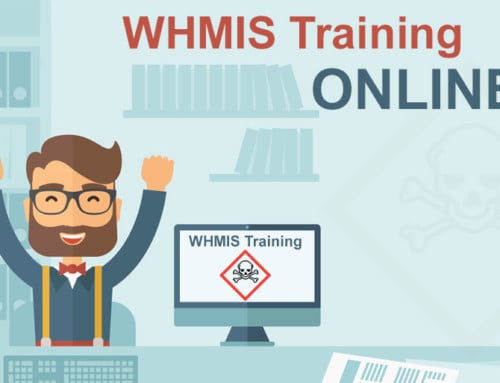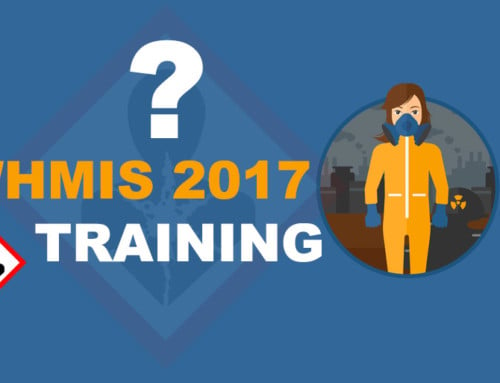WHMIS 2015 Labels
On February 11, 2015, the adoption of internationally agreed-upon, standardized hazard classification and communication system, the Globally Harmonized System of Classification and Labeling of Chemicals (GHS), officially commenced in Canada. Forming part of the Hazardous Products Regulations (HPR), the new regulations enabled the integration of international standards of classifying and labeling chemicals with the existing Workplace Hazardous Materials Information System (WHMIS 1988 or old WHMIS), resulting in the updated WHMIS 2015.
New Labeling Requirements
Among other things, WHMIS 2015 contains new requirements for labeling hazardous products. The new labeling system is aimed at introducing better communication of the dangers involved in handling hazardous chemicals, implementing standardized labeling principles that eliminate inconsistencies from country to country and promoting worker safety.
According to WHMIS 2015, all products used in the workplace which satisfy the criteria for being classified as hazardous must be labeled. Labels display chemical hazard information to workers and include the name of the material inside a container, the kinds of hazards it poses, and the measures that should be taken for its safe usage and storage. The labels are also aimed at alerting the user of the major hazards associated with the products they are about to handle, compelling them to follow recommended precautionary and safety precautions when handling the products.
WHMIS 2015 labels are added to hazardous products by manufacturers and suppliers before the products are provided to users or customers. All employers are responsible for ensuring that hazardous products entering into their workplaces are properly labeled. The employers must also create and apply workplace labels as necessary.
From WHMIS 1988 Labels to WHMIS 2015 Labels
Strictly speaking, WHMIS 1988 labels have not been replaced but have been absorbed and improved using GHS-recommended labeling; converting them into superior universal types of labels called WHMIS 2015 labels. The Old WHMIS labels with hazards denoted by symbols inside black “circled” borders are giving way to new labels containing GHS pictograms with red “diamond” shaped borders. Moreover, old WHMIS symbols such as “R” (for Dangerously Reactive) and “Exclamation T’” (for Other Toxic Effects) have been replaced by the eight GHS symbols (pictograms). Nevertheless, WHMIS 2015 labels still retain the old symbol for bio-hazardous and infectious materials, which is a black symbol on a white background and placed inside a black circled border.
Different Types of WHMIS 2015 Labels
According to WHMIS 2015, there are two principal types of labels: workplace labels and supplier labels. Workplace labels are affixed on hazardous products that have been produced or made at the workplace and that are exclusively used in that workplace. Containing product names, safe handling precautions and SDS references, workplace labels may also be created and used when supplier labels have to be replaced after becoming unreadable or when hazardous products have been decanted, transferred or poured into containers that are not the ones they were supplied in.
Supplier labels are affixed or attached to a hazardous product by a supplier and must always be on any hazardous chemical container received at every workplace in Canada. All supplier labels must be written in both English and French and used either as a single bilingual label or two different labels (one in French and the other in English). If any hazardous chemical is to be used directly from the container in which it has been supplied, then no other label must be added to the container.

Other essential features of WHMIS 2015 labels are:
- Clearly displayed on the product container
- Must powerfully contrast with all other information displayed on the container
- Must be easy to read (should not require corrective glasses to be read)
- All labels must be accurate at the time of importation or sale of the hazardous material
- Labels must be updated within 180 days after new significant information about the hazardous product becomes available
- All labels must be durable and moisture-resistant
Transition Period
While the new labeling requirements came into force in February, a transition period has been allowed to ensure a smooth shift from WHMIS 1988 to WHMIS 2015 labels. The transition period has three phases that are marked for the following milestones:
Phase 1: This is a consultation and initial implementation phase that runs from February 2015- May 31, 2017. In this phase, proactive suppliers and employers learn more about the new labels and begin to phase out the old ones gradually. By June 1, 2015, suppliers are expected to use the new labels on the products they ship out while employers are expected to prepare for training their employees and to consult with OH&S and other relevant governing bodies. By May 31, 2017, all importers, manufacturers and distributers must be WHMIS 2015 compliant.
Phase 2 (June 1, 2017-May 31, 2018): All suppliers and employers must be WHMIS 2015 compliant by May 31, 2018. During this period all new employees without WHMIS certificates must be thoroughly trained on WHMIS 2015.
Phase 3 (Not later than December 1, 2018): All employers, employees and suppliers must be WHMIS 2015 compliant.
During the transition period, the WHMIS 2015 labels must be introduced gradually at workplaces while workers, suppliers and employers are expected to learn about and to use both the old and the new WHMIS labeling practices.
Employers must ensure that:
- Workers are trained and knowledgeable on products with WHMIS 1988 and WHMIS 2015 labels
- Products with WHMIS 2015 labels are introduced as soon as practicable in their workplaces
Workers must:
- Check for product labels before using any products
- Read and follow all information on the labels
- Ask their supervisors for guidance whenever they are unsure about how to use or store certain products
- Request for new labels whenever the old ones are unreadable or inexistent
- Never use any products that have no labels
Conclusion
WHMIS 2015 labels are standardized and universally accepted labels that ensure seamless communication of information regarding various risks of exposure to hazardous products. The new labels are more comprehensive and display information more prominently, helping to reduce exposure to hazardous chemicals. By shifting from the old WHMIS labels to WHMIS 2015 labels, Canadian manufacturers, distributors, suppliers, employers and workers not only reduce workplace accidents and injuries in Canada but also boost international trade in controlled or hazardous chemicals and enable Canada to fulfill its international obligations.
General WHMIS 2015 Resources:
WHMIS 2015 Labels
WHMIS 2015 Hazard Classification
WHMIS 2015 Pictograms
WHMIS 2015 Safety Data Sheets
WHMIS 2015 Education & Training






